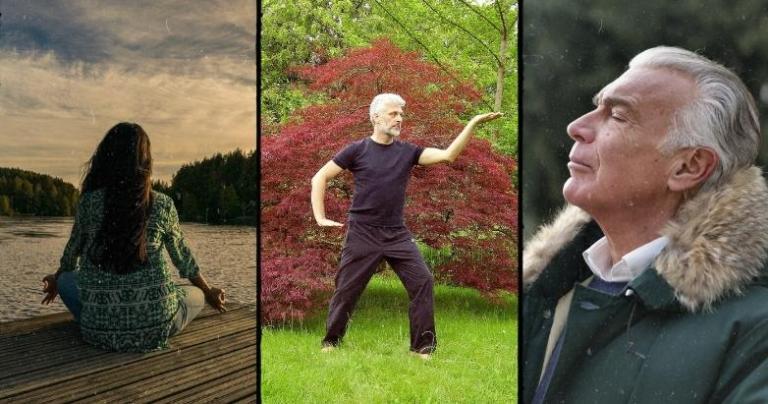
Since the mid-nineties, I’ve spent thousands of hours in the role of a non-academic teacher and facilitator. Because I never teach to a test, I am always on the lookout for what sticks and why? What do people comment on when I meet them after a successful seminar? What do they mention in emails and comments?
Three things have stuck out.
Examples, Instructions, and Metaphors
First, people remember stories and examples. The more personal—and preferably embarrassing—the better, but any story will do, even ones about other people.
Second, people remember step-by-step instructions. I’ve been stopped on the street numerous times by people thanking me for detailed instructions that helped them make changes in their lives.
Third, people remember metaphors. It seems that connecting something known to something unknown allows them to tap into their fountain of knowledge and experience. That’s what I love about such imagery. Unlike facts, metaphors honor everything that the person already knows. I cannot count the number of times someone in my seminars responded to a metaphor by saying, “You mean that…” and added tremendous insights I’d never thought of before.
Metaphors Encourage Ownership
When I was first asked to give a presentation about the topic of creating moments of peace in 2021, I decided to focus primarily on metaphors because I wanted to honor what people already knew. It is much more powerful when people walk away from a program saying “I am going to do this” rather than “he said that I should do this or that.” Ownership is important.
Overview of the Seven Metaphors
The Anchor is about being present.
The Bandwidth refers to the conscious mind.
The Steering Wheel addresses control or lack thereof.
The Instinct is a reminder to listen.
The Weather is an age-old metaphor for emotions.
The Current revolves around energy states.
The Tower offers a meditation approach based on an ancient story.
Some of the metaphors will resonate with you more than others. Listen to that.
1. The Anchor
The mind can be in more than two places at once. In fact, the mind can be all over the place. I know mine can. The body, however, can only be here and now. It is immovable from the present moment. That is why the body is the ideal anchor for the mind. Anytime the mind is restless, stuck in the past or worried about the future, drop the anchor by focusing intently on the body.
2. The Bandwidth
If you’ve ever cried out, “the internet is too slow,” you instinctively understand the concept of limited bandwidth. Internet bandwidth determines the amount of data that devices can access. Congestion in the bandwidth equals less speed. An uninterrupted flow of data equals more speed.
The mind’s bandwidth is similar because it is limited by conscious awareness. A thousand competing thoughts coming in from all sides will lead to irritation and anxiety, whereas a few thoughts floating around in our awareness will make us feel calmer. The more crowded the bandwidth is, the less peace we’ll experience, and the less crowded it is, the more peace we’ll feel.
To create moments of peace, the goal is to reduce the number of items in the bandwidth.
More crowded = Less peace.
Less crowded = More peace.
3. The Steering Wheel
Imagine being in traffic, obsessed with what everyone else is doing, wishing that you could take over their steering wheels, yet having no power to change their behavior. It would drive you nuts.
The steering wheel is a metaphor for what we can control. Ancient Stoics, Greek and Roman, took this idea to heart when they proclaimed that their followers should only focus on what they could control in life and be indifferent to everything else. They were onto something.
People feel powerless and miserable when they focus on things out of their control. Think about how much time and energy you focus on your steering wheel and how much you spend thinking about how other people are driving. The more you focus on others, the worse you’ll feel. The more you focus on what you can control, the better you’ll feel and the easier it will be to create moments of peace.
4. The Instinct
The instinct is less of a metaphor and more of a reminder to listen. Human beings are animals that have instincts. We forget this at our peril.
Two instincts deserve special attention.
One is the “fight or flight” response. It occurs when real (or imagined) danger sets off a chemical reaction that causes a person to want to fight or flee. It can be a helpful reaction when that person can jump into action but is harmful when all it does is fuel emotions, causing people to spin out of control.
The polar opposite is the instinct to rest and recover. Looking at the animal kingdom, all animals rest naturally when needed. However, because human beings have a faculty that allows them to override instincts—most beneficial for survival—they have learned how to put aside the instinct for rest in a 24/7 society that makes endless demands and offers easy access to distractions.
The result is that too many people are not getting enough rest. This lack of recovery time leads to a slew of physical, mental, and emotional problems.
Listening to the body and responding accordingly, especially when the instinct is to rest, is a vital part of the quest to create more moments of peace.
5. The Weather
Don’t like the weather? Just wait a minute.
It’s a joke that has become popular in many parts of the world. And it points to an important truth. The weather is constantly changing.
Comparing emotions to ever-changing weather cements the concept of impermanency. In the same way that those atmospheric systems don’t stay in the same place forever, no feeling is final. Distress will pass. Moments of peace will also pass.
Because it’s natural for emotional states to change, be prepared to hunker down for storms and enjoy the sun when it shines. Most importantly, be mindful of the ancient Persian saying, “this too shall pass.”
6. The Current
The current is the animating force that makes human beings go. Like electricity, it is invisible to the naked eye. Yet, people are aware of it daily, and it occupies language with ease. We talk about it when we have “a lot of energy” or “not very much energy” and quickly assess whether or not other people are energetic.
The current can be split into three categories that resemble states of water.
Swamp: Lethargy, sadness, exhaustion, and decline.
River: Intensity, passion, irritability, and stress.
Lake: Calm, peace, power, and depth.
Swamp energy is stagnant. River energy is intense. Lake energy is calm. All three have their purpose in life, but if you want to create moments of peace, it’s important to nurture the calm energy.
The cyclical nature of these three energy states is intriguing. The current naturally moves from lethargy (swamp) to intensity (river) to calm (lake), then back to lethargy, and so on. The cycle is neverending. Flowing water clears up the stagnant swamp. A calm deep vessel pools the flowing water, and it becomes a lake. Turn off the flow, and the lake becomes a swamp again.
Let’s say that you decide to wake up early to meditate but are tired and can hardly keep your eyes open. With the cyclical nature of energy in mind, you would need to increase your energy with movement or breathing before calming down for your meditation. Going straight from being sleepy to being calm will result in more sleepiness. The path from lazy to calm always moves through some form of intensity.
This metaphor underlines two things.
One, energy is needed to eliminate laziness before entering a calm state.
Two, staying for too long in the calm can turn into laziness.
No one can prevent the current from circulating naturally. Still, we can choose to rise out of lethargy with energy and then take breaks when the energy becomes erratic, intense, or stressful by creating moments of calm.
7. The Tower
The final metaphor comes in the form of an ancient story.
One day, a master called a favorite student and said: “You have done so well that I have decided to give you one of my treasured possessions.”
The student thought for a moment, then asked: “I can choose anything?”
“Yes, anything.”
“Then I would like the genie that grants wishes,” the student said gingerly.
“Are you sure?” the master replied. “The genie will grant your wishes, but you must keep it busy at all times; otherwise, it will destroy you.”
The student answered, this time with complete confidence: “Yes, I am sure. I have so many wishes. I doubt that the genie will ever be able to grant them all.”
And so, the student got the wish-granting-genie.
Two weeks later, a visibly anxious, unkempt, and exhausted student returned to the master: “Master, master! You must help me. It started out great. I wished for things I thought would take the genie days to complete, only to find them done in a matter of hours. Within a week, I had run out of wishes. I have been running and hiding ever since, hoping the genie would not find me and destroy me. What should I do? What should I do???”
The master answered calmly: “I thought this might happen. The genie is very powerful and difficult to control. You did the right thing by coming here. What you do now is call the genie and tell it to build a sky-high tower. Then you say, ‘Genie, go up and down the tower until I call you.’ That way, the genie will always have something to do, and you won’t have to worry.”
The Moral of the Story
The genie represents the rational mind. It can produce great achievements when focused and cause significant distress when distracted or untethered. Based on that understanding, we should all do as the student did and create our own towers.
An internal tower can be anything that keeps the mind occupied when it is not otherwise engaged. Traditionally, an internal tower is a word, phrase, image, or prayer. The great thing about this approach is that once an internal tower has been built, it can be used both while pausing between tasks and during meditation. The tower becomes the go-to resting place for the mind when it is not busy with something productive.
Which Metaphor Spoke to You?
Now that you’ve read them all, take a moment to think. Which one of the metaphors spoke to you? Why? Did your mind retrieve relevant information or start thinking about times when you created moments of peace naturally? For metaphors to work, the key is to run with the ones you find interesting or ones that your mind starts playing around with. Think about how your life would look differently, for example, if you anchored your mind to the body, thought of emotions like the weather, or built a tower that you sent your mind to anytime it was idle?
To learn more about this approach, read my previous article about the moments of peace principles.
Gudjon Bergmann
Author and Mindfulness Teacher
Amazon Author Profile
Recommended books:
- Monk of All Faiths: Inspired by The Prophet (fiction)
- Spiritual in My Own Way (memoir)
- Co-Human Harmony: Using Our Shared Humanity to Bridge Divides (nonfiction)
- Experifaith: At the Heart of Every Religion (nonfiction)
- Premature Holiness: Five Weeks at the Ashram (novel)
- The Meditating Psychiatrist Who Tried to Kill Himself (novel)
Picture: CC0 License
















